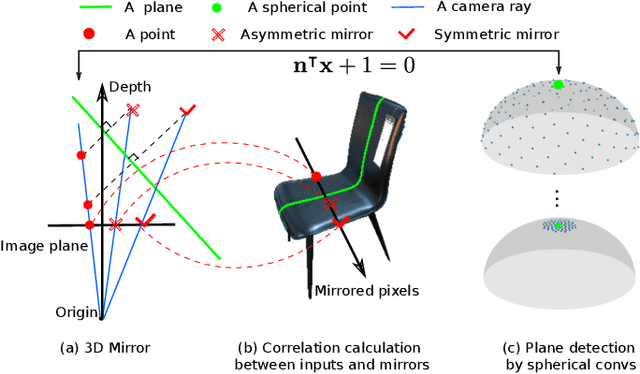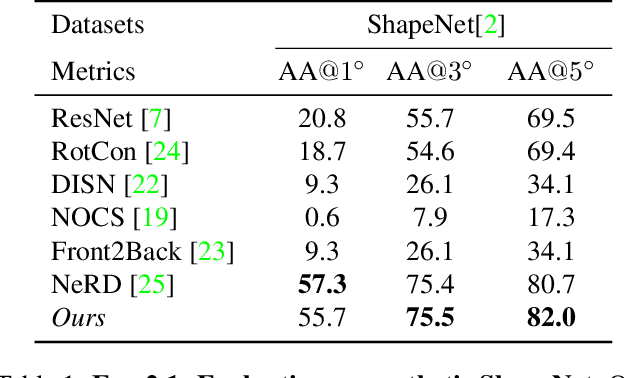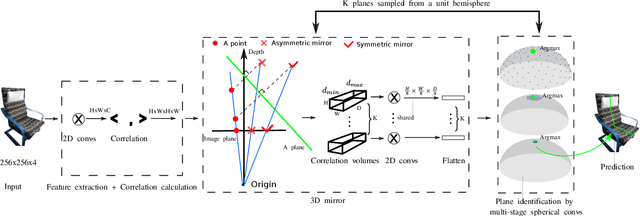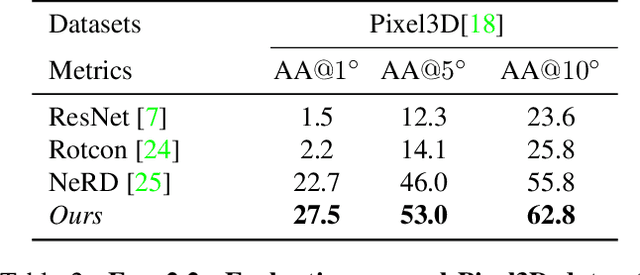Data-efficient learning for 3D mirror symmetry detection
Paper and Code
Dec 23, 2021



We introduce a geometry-inspired deep learning method for detecting 3D mirror plane from single-view images. We reduce the demand for massive training data by explicitly adding 3D mirror geometry into learning as an inductive prior. We extract semantic features, calculate intra-pixel correlations, and build a 3D correlation volume for each plane. The correlation volume indicates the extent to which the input resembles its mirrors at various depth, allowing us to identify the likelihood of the given plane being a mirror plane. Subsequently, we treat the correlation volumes as feature descriptors for sampled planes and map them to a unit hemisphere where the normal of sampled planes lies. Lastly, we design multi-stage spherical convolutions to identify the optimal mirror plane in a coarse-to-fine manner. Experiments on both synthetic and real-world datasets show the benefit of 3D mirror geometry in improving data efficiency and inference speed (up to 25 FPS).
 Add to Chrome
Add to Chrome Add to Firefox
Add to Firefox Add to Edge
Add to Edge